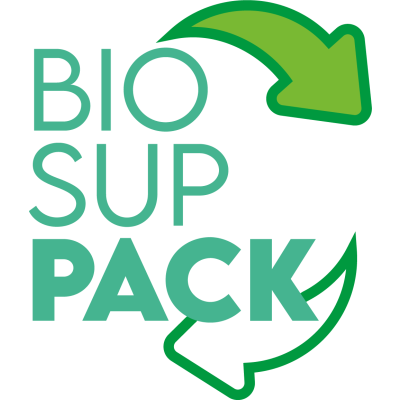
BioSupPack
Demonstrative process for the production and enzymatic recycling of environmentally safe, superior and versatile PHA-based rigid packaging solutions by plasma integration in the value chain.

Demonstrative process for the production and enzymatic recycling of environmentally safe, superior and versatile PHA-based rigid packaging solutions by plasma integration in the value chain.
The increasing public desire for sustainable products is driving a growing demand for bioplastics in the packing sector in order to minimise environmental impacts. Biopolymers such as polyhydroxyalkanoates (PHAs) – which are 100% bio-based and have exceptional biodegradability characteristics - have proven particularly popular. So popular, in fact, that they are expected to rise from 1.2% to 6.6% of the global production of bioplastics. However, meeting this growing demand will require further sources of raw materials without affecting biowaste value chains; the challenge will therefore be to rely on second and third generation sugar sources, rather than primary ones.
A potential source of these raw materials is brew spent grains, which is a by-product of the brewing industry. Its use as a feedstock is currently limited; most of it goes to animal feed, some for bioethanol, while 20% goes to landfill. It is a challenging raw material – it has a high moisture content, low levels of fermentable sugar content and can spoil quickly. At the same time, however, it offers a number of potential advantages as a feedstock for PHA. It is produced in substantial quantities, it is widely available all year round, is relatively stable (compared to other food-based by-products) and the prior malting and mashing make it relatively easily to isolate the 2G sugars.
The ultimate goal of the BioSupPack project is to deliver novel, cost-competitive and versatile bio-based packaging solutions based on PHA. These will be derived from highly (>85%) renewable, second- and third-generation raw materials, and will provide high-performance packaging for food and drink, cosmetics and homecare products.
The overarching objective of the BioSupPack project is to demonstrate deliver novel, cost-competitive and versatile bio-based packaging solutions based on PHA. Within this, it will pursue a number of specific objectives.
Overall, the BioSupPack project provides a number of other environmental, social and economic contributions. These will include reducing pollution (including the presence of microplastics) and improving the innovation capacity within Europe in this developing sector.
The overarching objective of the BioSupPack project is to demonstrate deliver novel, cost-competitive and versatile bio-based packaging solutions based on PHA. Within this, it will pursue a number of specific objectives. The BioSupPack project is aiming to delivering a number of impacts that will contribute to the wider goals of the BBI-JU These will include:
Introduce two new consumer-oriented packaging products, in the form of high-performing rigid mono-material packaging with excellent barrier properties and coated and grafted fibre-based packages: wet coated and grafted paper structures, with unique functionalities - e.g. suitable for microwaving while remaining compatible with optimal end of life properties.